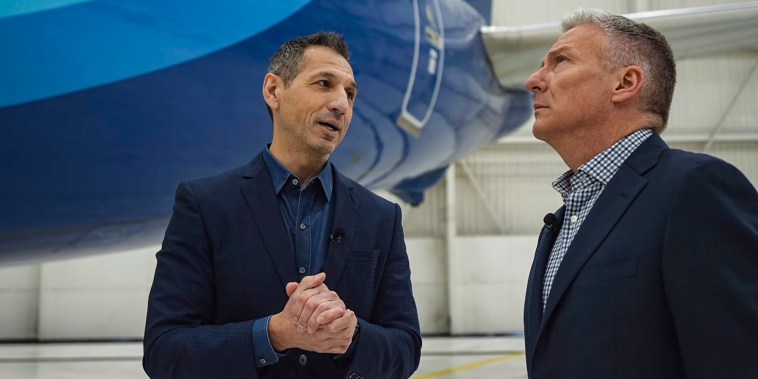Following the almost catastrophic incident involving a Seattle bound Max 9 aircraft recently, Brad Tilden, Alaska Airlines CEO, announced a major quality control concern on their Max 9 planes, unraveling an unsettling discovery of ‘many’ loose bolts upon inspection. This disclosure is currently causing a massive stir in the aviation community, raising eyebrows over the implications it may have on the industry’s safety protocols.
The near-disaster happened mid-air during a flight leaving Tampa. The pilots on board the Max 9 plane had to divert the course toward New Orleans after the pilots detected a potential engine malfunction. Despite the emergency landing being successful without any reported injuries or fatalities, the consequent investigation into the aircraft revealed a terrifying detail – ‘many’ loose bolts securing a key part of the engine.
Mr. Brad Tilden came forward with the revelation of finding loose bolts on their fleet of Max 9 planes during a news briefing. The loosened bolts were a part of the engine’s housing unit, a critical component responsible for adequately combusting the fuel-air mixture and propelling the plane. The situation was dangerous as it could have potentially resulted in an in-flight engine failure.
Following this startling incident, Alaska Airlines undertook comprehensive fleet-wide inspections to ensure the safety of their Max 9 planes. Tilden emphasized that the safety of their passengers is paramount for Alaska Airlines and they wouldn’t compromise it for anything else. He also illuminated on the actions Alaska Airlines took after the revelation. Besides immediate inspections, they also engaged in constructive dialogue with Boeing, the aircraft’s manufacturers.
The response from Boeing, however, has added more fuel to the already lit fire. Over the years, Boeing has witnessed a series of setbacks involving the safety of their planes, especially the Boeing 737 Max. The loose bolts issue hits close home as it stands as another testimony of the flawed safety standards of their aircrafts.
Tilden, in the briefing, hinted at wanting improved quality assurances from Boeing. He maintained that while Boeing has supported them during the analysis of the incident, it’s vital for the leading aircraft manufacturer to raise their standards of safety and quality control.
This incident doesn’t only cast a shadow on the unity of Max 9 planes but it also casts doubts on the global aviation industry’s quality control measures. It questions if there are adequate checks and balances to ensure that safety isn’t compromised at any stage of an aircraft’s life cycle- from manufacturing to maintenance.
Experts have joined the conversation too, voicing concerns over how safety protocol lapses like these can erode the trust passengers put in airlines. Effective solutions proposed include a revamp of assembly and inspection practices, better manufacturer oversight, and stricter regulations.
Unraveling in the wake of this incident is a stark realization that commercial aircraft safety is a chain, only as strong as its weakest link. If one bolt goes unchecked, it has the potential to endanger hundreds of lives, a chilling reality that cannot be overlooked when the stakes are this high.
As Alaska Airlines, Boeing, and relevant aviation authorities address this recent encounter, it calls for the aviation industry as a whole to reevaluate and bolster its safety measures. Restoring the trust of passengers hinges on the transparency of these actions and the emphasis put on the value of human life over systemic complacency.




